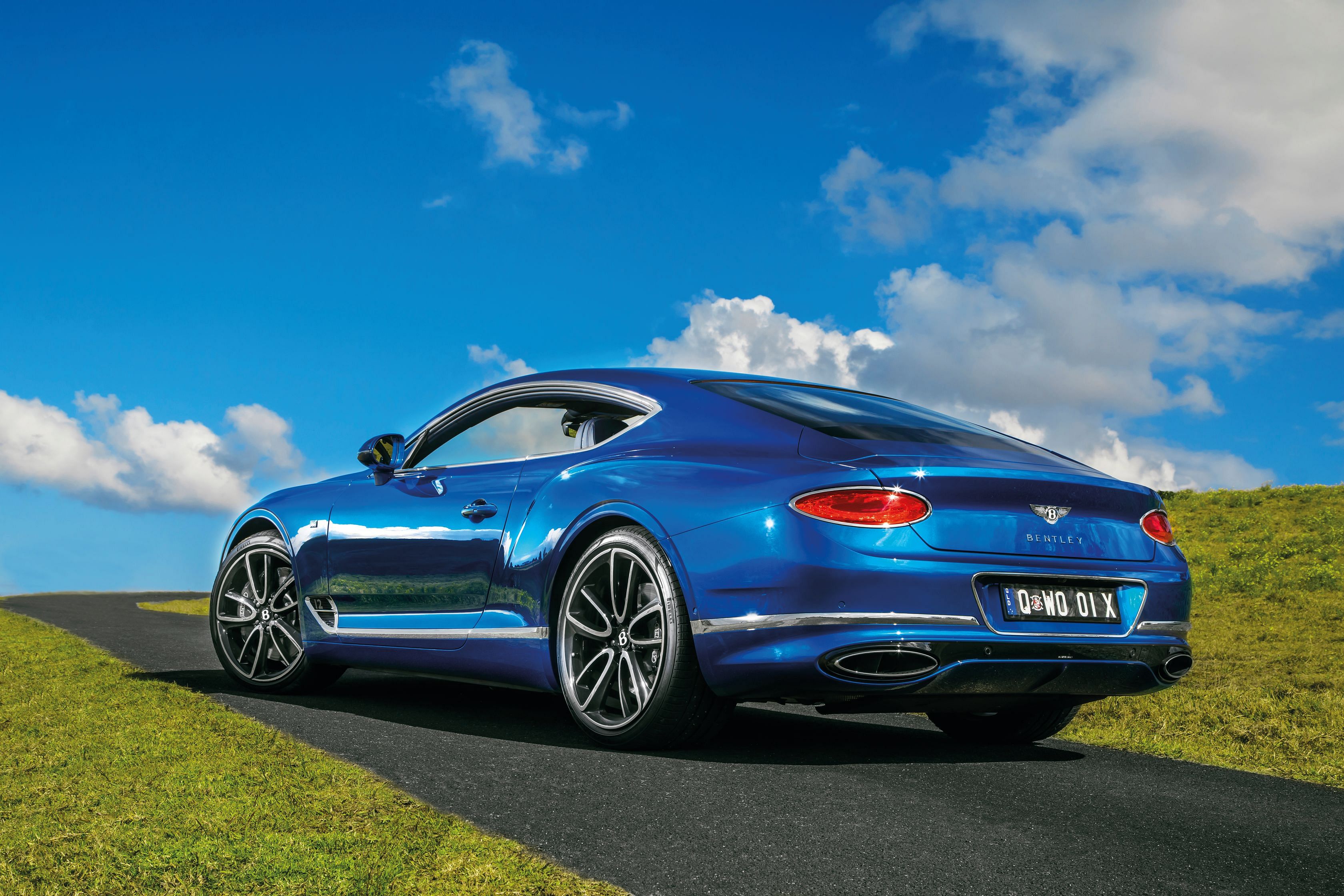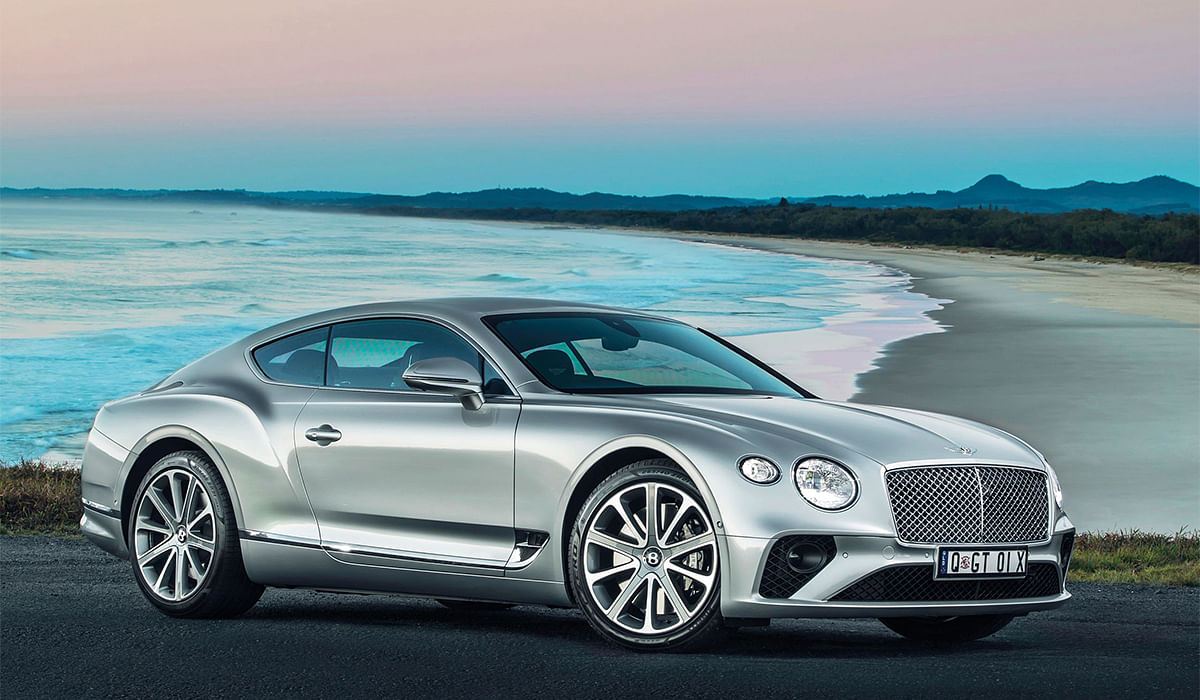[dropcap size=small]M[/dropcap]an – let’s call him Mike – pulls up in a late-model Italian sports car. Takes a gander at the third-generation Bentley Continental GT, walks around it to have a closer examination, and promptly plonks his name down for one.
“He did not even know the specs,” recalls Bentley’s David Parker of the encounter at the car’s UK pre-launch customer event. “He told me what is more important is that he had instantly fallen in love with how it looked – an object that would make him smile when he sees it in his driveway in the morning.”
His point is that people like Mike are attracted to good design without necessarily realising it. Sceptics may counter that, holding the view that, as the head of product marketing, Parker has to talk up the car, but his anecdote is entirely believable. Whether in photos or in the flesh, the new Continental GT is genuinely stunning, especially when viewed under the brilliant sunshine here on Australia’s Gold Coast, where the car was recently launched for the region.
(RELATED: What’s going to happen to the car industry, according to Bentley CEO and Audi MD)
While the dimensions of the beast remain roughly the same as before – give or take an inch here and there – on the whole, it comes across as more athletic than its predecessor. This transformation is courtesy of the liberal application of visual tricks, the first of which you would notice as you approach the car from the front.
It appears to sit squat thanks to a lower bonnet, reduced overhang and a broadened matrix grille. Then, trace with your eyes the power line as it runs down the side of car. Its subtle, gradual drop towards the rear, combined with the faster sloping roofline, fools your brain into thinking that the car is slimmer. This dramatically contrasts with the muscular haunch (the body panel that flares out above the rear wheel), evoking the image of a sprinter’s sinewy glutes, as he crouches at the starting line, ready to release his pent-up energy at the crack of the pistol.
Finally, at the rear, Bentley has deconstructed the dual-stacked oval tail lamps that used to be housed in a rectangular cluster, employing just one elliptical light per side, another design hack that helps to visually stretch out the width of the car.
Arguably, any competent designer could dream up these tweaks, but it takes Bentley’s deep pockets to execute the rest of the eye candy. Take, for example, those tail lamps. Like the head lamps, they feature an expensive new faceted effect: The tail lamps glow red like afterburners, while the other twinkles like cut-crystal whisky glasses.
And that gorgeous interplay of sharp edges, and concave and convex surfaces on the bodywork? Traditional pressing would tear the metal apart, so Bentley borrowed a pricey technique from the aerospace industry called Superplastic forming, which heats sheets of aluminium to 500 deg C to render them malleable, before vacuuming them over the mould.
LOOKS THE PART, BUT HOW DOES IT DRIVE?
At this point, sales could have simply told engineering to sign off the designers’ blueprint, pat one another on the back for a job well done and head down to the pub. End of story. Truth be told, driving dynamics has not been Bentley’s strongest suit or, hitherto, has it been a particular focus. Neither did customers care, it seemed; the Continental GT in all its previous guises found 70,000 owners, an astonishing sales figure for a luxury car and Bentley’s most successful model yet.
(RELATED: The fastest four-seater in the world is now the Bentley Continental Supersports)
Fortunately, though, this is not a classic case of all show and no go. The revamped mien in fact portends the renewed vigour of the car. On these hairpins deep in the Byron Bay hinterland on Australia’s south-eastern seaboard, the new Continental GT tackles – and savours, even – each corner with deft poise and alarming alacrity, where the old car would have heaved, pitched and rolled.
It is not that the new car is that much lighter (it still weighs 2,244 kg, down 70-odd kilos, if you are keeping count). Rather, the newfound agility is due to a chassis, co-developed with Porsche, designed to whip handling into absolute obedience. (The previous car had Volkswagen Phaeton underpinnings, known for its comfort but not so much for its sportiness.)
The front wheels, for instance, have been shifted forward by 135mm, improving weight distribution. While the car is still driven through all four wheels, the new system now preferentially sends power to the rear, unless the front needs some of it to help maintain grip. Torque vectoring also makes an appearance in the Continental GT’s repertoire, with selective braking of individual wheels to improve traction and agility while cornering.
But the biggest change must be the adoption of a rather clever high-powered electric active roll-control technology first seen in the Bentayga. What this system does basically is to detect the side-to-side rolling caused by inertia when you change direction, and pushing out a massive amount of torque to resist it within a split second. Much more versatile than simply installing stiffer springs.
(RELATED: Why did Bentley put a diesel engine in the Bentayga?)
If you have skimmed through all that technical mumbo jumbo, the crux is that the car will sail through corners even at stupid speeds, while maintaining a cushy ride under more sedate circumstances.
THE INSIDER NEWS
And that would read “most of the time”. For, once ensconced in the lovely cabin, taking in the scent of the cowhide and beholding the acres of wood, you would simply be encouraged to relax and simply waft along.
The rotating display is a case in point. Taking centre stage on the fascia, it initially presents itself as a continuous section of veneer that bridges those to its left and right. When you start the car, it will swivel and reveal the touchscreen, like the licence plate on a James Bond car. But, if the mood calls for it, you can select a third mode that displays three olde worlde analogue gauges. Digital detox, if you will.
You can expect the typical top-notch Bentley finishes elsewhere in the passenger compartment. Debuting in this model is the dual wood option, with the usual selection of veneers contrasted against a strip of piano black. The centre console may now be ordered in a Cotes de Geneve finish, a nod to fine Swiss watchmaking. And, complementing the bejewelled exterior lamps, a novel knurling surface is available for the tactile controls such as the knobs and levers.
(RELATED: Breitling and Bentley team up to make a timepiece that pairs with the Continental Supersports)
The signature embroidery on the seats and door panels has been taken to another level, with an optional “diamond-in-diamond” pattern that took – believe it or not – 18 months to develop. Each component diamond unit contains 712 stitches; 2.8km of thread is used in a car thus equipped, enough to encircle Fort Canning Park.
The design brief for this car was plain: to make the best grand tourer there is. Bentley has achieved that and more, and is beginning to encroach upon serious sports car territory.
I recall meeting, a few years ago, a product manager of the Italian marque mentioned in the first line of this article. He told me at the marque’s own grand tourer’s launch that he considered the Bentley Continental GT to be a distant rival, “only if the customer prefers a softer ride”.
For sure, the British contender will not be a one-for-one replacement for his car – product philosophy being a major reason – but the overlap is increasing. If the Mike is anything to go by, that product manager would need to start revising his competitor matrix, stat.
Bentley Singapore, 45 Leng Kee Road.
Tel: 6378-2628.

THE NUMBERS
ENGINE:
6 litre, twin- turbocharged W12 TSI
POWER:
626bhp at 6,000 rpm
TORQUE:
900Nm between 1,350 rpm and 4,500 rpm
0-100KMH:
3.7 seconds
TOP SPEED:
333kmh
3 NEW FEATURES IN THE CONTINENTAL GT
(RELATED: 2019 Bentley Continental GT Convertible is the brand’s sportiest version to date)
![]()







